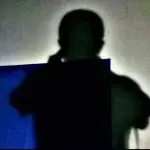When memory dies, ghosts remain. This film is Mexico’s echo, retold in fragments of love, guilt, and silence.

Once in a lifetime, a story crashes into us with such force it shatters and reorders the way we see the world.
These are stories that resonate in us powerfully, Pedro Páramo is not just a novel, nor simply a film. It is a metaphysical wound torn open across generations. A lament etched in the dust, a ghost that still mutters beneath the cracked soil of Mexico’s memory.
Juan Rulfo’s 1955 novel, Pedro Páramo remains a cornerstone of Latin American literature because of what it dares to confront: The silence for violence, the moral fatigue of a nation, and the spectral weight of patriarchal power. It is a book that rejects the comfort of liner narrative and collapses the boundaries between the realism and surrealism. A film where memories dissolve and time breaks.
When I first heard of Rodrigo Prieto cinematic adaptation for Netflix I hesitated as a way of reverence. I knew this was not a story one enters lightly, that before stepping into the cinematic Comala, I had to pass through Juan Rulfo´s book pages first. It was the right choice. Because only through the slow unraveling of the novel’s poetic writing , I could come to fully experience the film quiet gravity and its visionary interpretation.
I do not say this lightly: Prieto’s Pedro Páramo has become My favorite Mexican film of all time. It dares in ways few Mexican films have dared. It breaks with convention. It breathes in the dissonant rhythms of memory.
This movie analysis is a descent into three fundamental territories: The weight of patriarchy and the myth of paternal power; the ghostly nature of memory and the metaphysics of death; and the spiritual collapse of a nation post-revolution. I will weave together the literary power of Rulfo’s text with Prieto’s bold cinematic language, tracing the echoes that bounce between them.
Let us begin…
The Father, The Land & The Broken Nation

Before we analyze the characters that inhabit the spectral landscape of Pedro Páramo, we must first return to the world that birthed them, not the fictional town of Comala, but the very real ravines of Apulco, Jalisco, where Juan Rulfo was born in 1917. Rulfo’s world was one of silence, abandonment, and spiritual erosion. His childhood unfolded during the violent years of the Cristero Rebellion (1926–1928), a war between church and state that devastated rural Mexico. During these early years, Rulfo experienced a profound and irreparable loss: the deaths of his father, his grandfather and later on his mother left him emotionally orphaned, eventually confined to a harsh orphanage system in Guadalajara, which he once described as a "prison".
The Cristero Rebellion marked a rupture between the Mexican people and their institutions: Family, Church & Insurgentes. Rulfo internalized this fracture and later transformed it into one of the most haunting literary topographies ever imagined. His fiction does not depict reality, it distills its ghost. Through Rulfo, we understand the psychological aftermath of a Mexican Revolution that failed to fulfill its promises, where violence persisted not as an event but as a eternal state of being.
There is a telling detail from Rulfo’s biography: His grandfather, a builder and landowner, is said to have constructed much of his hometown’s basic infrastructure, The river bridge and its church. These two elements, (the river and the church) later reappear, reimagined and deconstructed, in Pedro Páramo. In the novel, they no longer function as symbols of connection or faith, but rather as sites of rupture. The river is no longer a passage, it is a symbol of detachment. The church is no longer a sanctuary, it is a hollow echo chamber of lost belief and grief.


From this soil of trauma, Rulfo plants the seeds of his characters. Pedro Páramo is at its core a meditation on patriarchy, not merely the father in the biological sense, but the father as a metaphor for power. Pedro is a cacique, a rural tyrant whose land is an extension of his ego and whose people are reduced to shadows under his authority. He doesn´t recognize his children and he exploits women. He is both the architect and the twilight of Comala.

The figure of patriarchal landowner, becomes Rulfo’s clearest critique of post-revolutionary Mexico. In a nation promised freedom, what took root instead was authoritarianism disguised as leadership. The revolution instead of leveling the social terrain, reinforced it through new hierarchies. The myth of the Macho Man was revealed to be hollow, a performance held together by violence and silence. Pedro Páramo is no longer a man, he is the broken mirror of the Mexican nation, forever reflecting its own unfulfilled myth.

And then there is The priest. Father Rentería is perhaps one of the novel’s most tragic figures, a spiritual guide who has lost faith, not only in God but in the very ethics of salvation. He absolves the powerful and condemns the weak. He is no longer a moral compass but a bureaucrat of sin, trapped in a theological system that serves power rather than justice. Through this character, Rulfo explores the spiritual collapse of Mexico, a land where even God seems absent or even worse…. indifferent.

What remains in this shattered land is inheritance and grief. Juan Preciado, (played by Tenoch Huerta ) the novel’s nominal protagonist, arrives in Comala searching for his father, but what he finds are only echoes. He pieces together his lineage through whispers, half-told stories, and the murmurs of the dead. His journey is not one of discovery but of erasure. There is no father waiting for him at the end of the road… only ruins, whispers and dust. It is the ultimate portrait of a son abandoned, not just by a parent but by a god.
In this way, Pedro Páramo is not only a personal story, it is a collective one. It is about the aftermath of revolutions, about the trauma that lingers when the banners have fallen. It is about sons wandering through a desert of memory, trying to find meaning in what was destroyed.
The story arc of Juan Preciado does not offer resolution. It merely returns us to the silence.

The Eternal Return
As Juan Rulfo himself admitted, Pedro Páramo is a novel of ghosts. And it is precisely this spectral nature of the text that makes it one of the most radical literary works of the 20th century, not just in Mexico, but across the entire global literary canon.

Rulfo approached narrative not as chronology, but as collapse. He once explained that working with ghosts as characters allowed him the freedom to escape linear time. This technique, where a character could be present, disappear, and then reappear without justification, reflects a profound philosophical rupture with realism. In Rulfo’s world: Coherence is a lie. Time does not move forward, it loops. The dead are not gone; they speak. And the living are not whole; they echo.
The structure of the novel resists clarity because it resists resolution. One does not “understand” Pedro Páramo after a single reading, one endures it. One returns again and again only to find that what was once clear now has faded and what was once vague now speaks more loudly. The very act of re reading the novel is a kind of eternal return, a repetition of loss and grief.
This idea finds a striking philosophical resonance in Friedrich Nietzsche’s notion of The Eternal Return: The idea that every moment, every sorrow, every joy, will be repeated infinitely. It is not merely a metaphysical concept, but an ethical one: can you live your life in such a way that you would be willing to relive every moment of it, again and again, forever?
For Rulfo and for his characters, the answer is already in motion. Comala is not just a town; it is a abyss. Its inhabitants are trapped in memory, sorrow and unresolved guilt. They do not seek salvation; they linger in penitence. Pedro Páramo becomes the Mexican iteration of Nietzsche’s eternal return, a purgatory without closure, a nation caught in the Limbo.
This impossibly rich and fragmented narrative finds a stunning visual counterpart in Rodrigo Prieto cinematic adaptation. It is rare that a film adaptation of a sacred novel achieves not just fidelity, but transformation. Through his masterful use of light, composition and rhythm, he gives us a film that is immersive .

The film is saturated with motifs of passage: crosses, rivers, intersecting roads, thresholds that seem to open into nowhere. These are not symbolic flourishes; they are spiritual coordinates. They mark the fragile borders between life and death, dream and memory, purgatory and presence. In Prieto’s Comala, time does not pass, it folds. The film becomes an act of listening to the muttering of souls who have forgotten what it means to live.
And yet, what makes Prieto’s film so powerful is not its philosophical ambition alone, but its clarity. It takes the radical fragmentation of Rulfo’s prose and gently re-assembles it into something more graspable, without diminishing its depth. It respects the confusion, but guides the viewer. The voices, the overlays, the shifts in temporal and spatial logic, they are handled with such delicacy that the result is not alienation, but immersion.
In this landscape, every road leads to Comala. And Comala leads nowhere. It is not a place to be found, it is a place to be remembered. Or, perhaps more accurately, a place that remembers you.

The Poetic Decay of a Nation
There is a law older than nations, older than memory itself: everything that rises, must fall. Power, when hold without passion, curdles into rot. That is the final truth of Pedro Páramo. This is a philosophical meditation on decay, the tragic paradox of power and the impossibility of conquering everything, especially that which lies outside the reach of force: Love, Redemption and Peace.
Pedro Páramo is a man who believed himself invincible. But what Juan Rulfo shows us, is that such power is always short-lived and the higher one climbs the pyramid of domination, the deeper the fall into the grave.
What Pedro cannot possess is the one thing he wants most: Susana.

She is the metaphysical essense of his ruin. Susana is his phantom ideal. She is the unreachable heaven above his hell. To name her a mere love interest would be to strip her of her symbolic charge. She is the embodiment of all unfulfilled dreams, the face of a redemption he cannot buy, seduce or conquer.
Pedro’s obsession with Susana is not romantic, it is existential. In her madness and detachment, she becomes something divine, untouchable. She resists his world of control, and therefore represents everything he cannot bend to his will.
The spiritual rot of Pedro Páramo is not caused by illness, nor age. It is caused by guilt. His sickness is not of the body but of the soul. The people he has destroyed have not disappeared, they linger. They rot his land from underneath.
This is what Rulfo understands about death. And it is what Prieto renders so poignantly in the film’s final movements. Death is not an ending, it is a return. In Pedro Páramo, death is not a finality but a transformation.

The final chapters of this narrative do not end with redemption. There is no moral resolution. There is only acceptance. The crossing of the final threshold. The realization that nothing built on domination can endure. The bones rest beneath the dust. The mouth is filled with earth.
This is the true face of the eternal return. Not the heroic cycle of conquest, but the slow, painful recognition that everything must be relinquished. Pedro Páramo offers truth in a country still wrestling with the ghosts of its past, that truth is not only necessary, it is sacred.
























































View replies 0